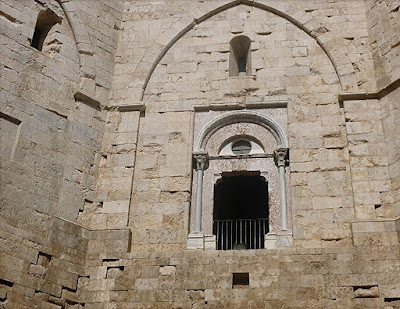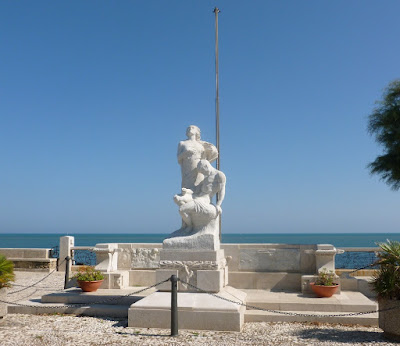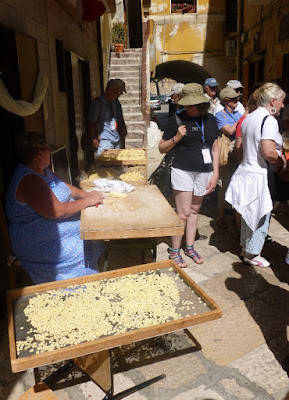During my recent trip to Italy, the last full day had no scheduled tours, thus being called a "free day". A good number of us decided to explore the city of Monopoli. Permitted an educated guess, I would say that the city's name is of Greek origin, probably meaning "one city" (like "Tripoli" means "three cities"), and shouldn't be confused with "monopoly". Monopoli is so close to Polignano a Mare that a train ride between them lasts about 5 minutes. It was my first train ride in Italy since 2004, when I travelled between Orvieto and Rome.
Within the city's main square, the Curso Umberto, is this statue.
I wandered into the old section of Monopoli, and found this church towering over the neighboring buildings.
I found my way through the old section down to the beach, where the locals were hanging out. Much of the beach was rocks in front of the seaside city walls.
Here's a view from a different angle, with the dome of another church in the background.
Further down the road above the beach were these steps, formed in the shape of the letter J.
After going back through the old section, I found yet another church, next to a produce market.
My favorite part of Monopoli was a park not far from the Curso Umberto. They certainly have some gorgeous trees over there.
The park included this fountain, made with octopus figures.
Thus ends my Italian pictorial travelogue. Any odds and ends from the trip will be posted later.




















































